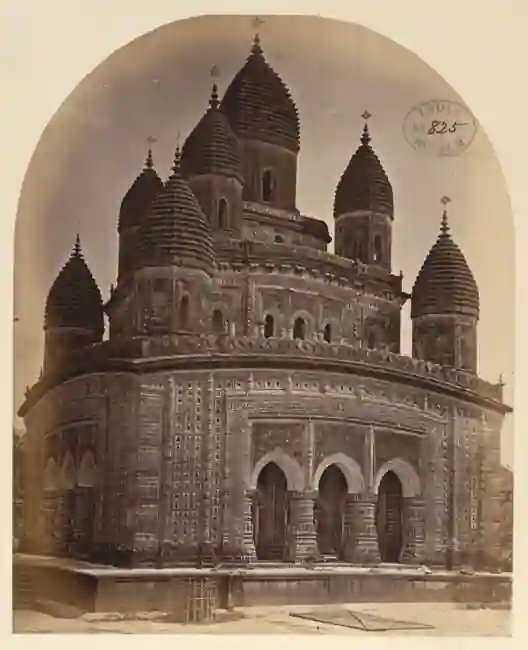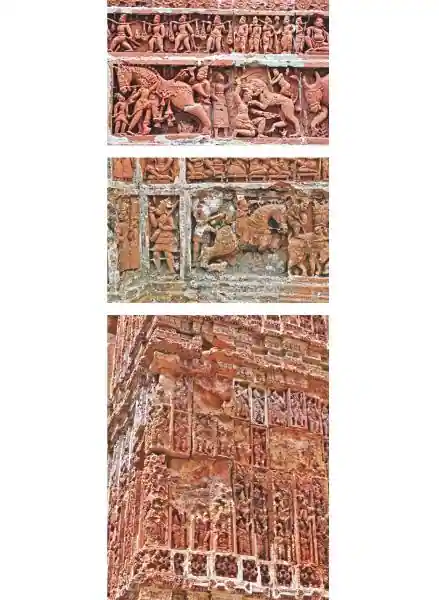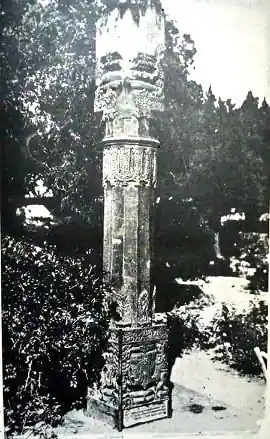Decline of the Dinajpur Raj family
Author: FW Strong
Foundation of Dinajpur Zamindari
The Dinajpur Zamindari was one of biggest Zamindaris in Bengal in 1793, when the permanent settlement was concluded by the Cornwallis administration. Dinajpur Zamindari traditionally believed to have been founded by one obscure Dinaj or Dinaraj from whom the district derived its name. During the rule of Mughal Emperor Akbar, a holy man known as Kasi Thakur, also familiar as Brahmachari and Mohanto, claiming descent from Raja Ganesha, acquired considerable lands in Dinajpur and Maldah districts. He is reported to have bequeathed his whole estate to Srimanta Dutta Chaudhury, one of his favourite Kayastha disciples.
Srimanta was succeeded by his daughter’s son Sukdev who, besides inheriting vast Zamindaris in parts of Rangpur, Bogra, Maldah. Dinajpur and Thakurgaon districts extended his estate to include Ghoraghat, Nawabpur, Khetlal, Shibganj, Panchbibi, Badalgachhi and Adamdighi thanas.
Considering the vast extent of his estate Mughal Emperor Aurangzeb conferred on him the title of Raja in 1677. His youngest son Prannath succeeded him in 1682.
Prannath, the most famous person of Dinajpur Raj Family
Prannath was the most famous and powerful potentate of the family who began the construction of the fabulously ornate terracotta rich Kantanagar temple (‘nava-ratna’ temple) in 1722, but could not complete during his lifetime. It took 30 years to complete by his equally able adopted son Ramnath in 1752.

In 1780 AD Raja Baidyanath of Dinajpur died without an heir and his widow, Rani Saraswati, adopted a young boy named Radhanath and acted as the guardian of the minor. On payment of a succession fee of 730 mohurs, the Rani obtained from the East India Company a Sanad declaring Radhanath succeessor of Baidyanath. Taking advantage of the tender age of the new Maharaja, the East India Company farmed out the Zamindari to one Devi Singh to ensure collection of revenue. Devi Singh by his exaction and oppression drove the peasantry into rebellion. The rebellion assumed such magnitude that troop had to be called in and many persons were severely punished or executed before order could be re-established.
Raja Radhanath & Rani Tripura Sundari
In 1792 AD Raja Radhanath was placed in charge of the estate, a year of so after the conclusion of the decennial settlement. The jama at the which the settlement was made was fixed at sicca Rs. 14,02,082 or equal to 72.5 per cent of the gross produce. It is therefore no wonder that the Raja couldn’t fulfill his engagements. In 1794 his seal was seized and locked up in the Collectorate treasury, and Ramkanta Roy was appointed manager. The Raja appears to have been reinstated in about 1796 AD, but next year arrears of the revenue accrued to the extent of 70,00o rupees, and by the order of the Board of Revenue part of the estate was sold.

In the years that followed , the revenue continued to be in arrears as a result of which further sales were effected, and the condition of the estate went from bad to worse. The Raja struggled to save his estate by raising money on mortgages ( one of the principal creditors being Ram Kanta Ray), and buying back parts of estate under assumed names. His wife, Rani Tripura Sundari and the Old Rani Saraswati also purchased lands to a considerable extent. By the end of 1800 AD almost the whole estate had been alienated, and the Raja was virtually a prisoner in his own house as his creditors were threatening to seize his person and to have him imprisoned.
Ruination of Dinajpur Maharaja’s Estate
Raja Radhanath died in 1801 AD at the early age of twenty-four. The estate of the Maharaja of Dinajpur practically disintegrated after Radhanath. The ruination of this ancient family records the most significant change that occurred in the district of Dinajpur after the East India Company took over its management. Either out of greed or out of a set policy the demand for the land revenue was kept at a very high figure making it well-nigh impossible for any one to meet it for a sufficient length of time.
The representative of the East India Company probably did not think it wise to allow a powerful local magnate like the Maharaja of Dinajpur to possess such a vast tract of land. They perhaps thought that with the weakening of the power and prestige of the Maharaja of Dinajpur it would become easier for them to strengthen their hold over the region.

Dinajpur Rajbari and Kantaji Temple Damaged by earthquake
The Dinajpur Zamindari that continued after 1800 was just a shadow of its past. The palace (Dinajpur Rajbari) and the Kantaji temple were very badly damaged by the great earthquake of 1897 and had to be rebuilt by Maharaja Girijanath Roy Bahadur. During the time of his adopted son Jagadisnath, the zamindari was abolished under the East Bengal Estate Acquisition Act, 1950. Jagadisnath died in 1962 at Calcutta.
Source:
Strong FW, Dinajpur District Gazetteer ( Allahabad, 1912)
